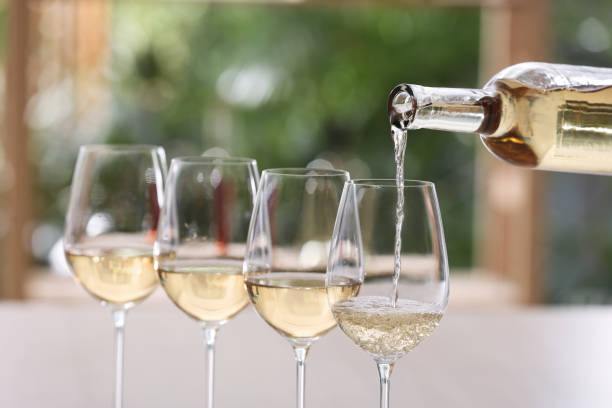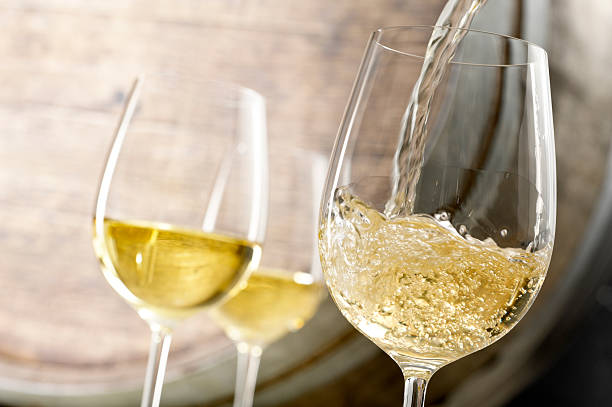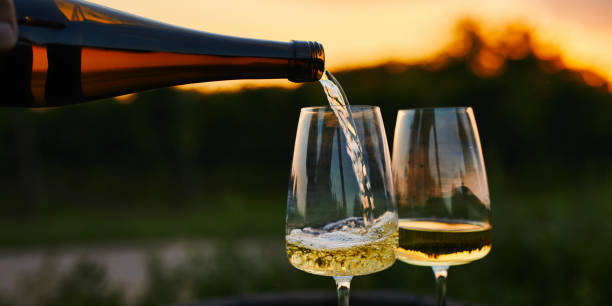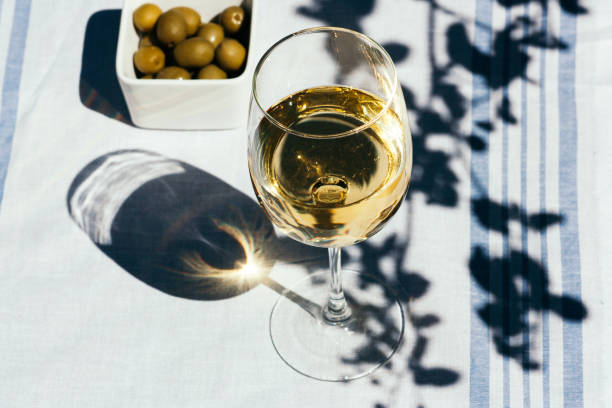If you’re like most people, your knowledge about white wine might be limited to its reputation as the go-to party beverage at events where red wine isn’t served, or perhaps you know it’s higher in acidity than its red counterpart. Although there are some broad generalizations about the differences between white and red wine that hold true, there are many myths surrounding white wine that may actually steer you in the wrong direction when it comes to choosing which to drink and pair with food. Here are some of the top myths about white wine that you should stop believing now.
1 – White wine must be served chilled

While white wines are typically served chilled, there’s no rule saying that you can’t serve them at room temperature. With certain styles, like Chardonnay and some others from certain regions, it’s actually recommended that you don’t chill them—this is due in large part to how these wines pair best with food. In fact, many restaurants serve their white wines (both by-the-glass and by-the-bottle) at room temperature.
2 – The darker the colour, the better the quality
While it’s true that many red wines are aged in oak, it has nothing to do with colour. The taste and smell of a wine depend on its grape variety, not its colour. In fact, white wines can be made from red grapes or black grapes (such as Pinot noir). So don’t judge a book by its cover!
3 – All Chardonnay tastes the same

Chardonnay is made in many regions around the world, and these wines are rarely alike. In fact, Chardonnay produced in California often tastes quite different than that produced in Burgundy or Champagne. Like other grapes, you’ll find a range of flavor differences depending on where it’s grown and how it’s treated.
4 – Natural wines are better than conventional wines
This one is actually true, but not for reasons that most people think. There are actually many advantages of organic and biodynamic wines, including higher levels of antioxidants. It’s just a shame they tend to be pricier than ‘normal’ wines.
5 – Crisp and Dry Is Good

Good white wines are crisp and dry, right? Well, no – that’s a common misconception. Crisp and dry actually describe different sensations that you experience on your palate – not what type of wine it is. In general, crisp is a taste and dry is a sensation .
6 – There is only one way to pronounce Pinot Grigio
Pee-noh Grig-EE-oh. Unlike Pinot Noir, which is not only one of France’s greatest wines but also one of its most distinctive, Pinot Grigio doesn’t have a unique pronunciation in English. As a result, however, some people don’t know how to pronounce it at all.
7 – Riesling Is Only From Germany

It’s true that most of Germany’s white wine production comes from Riesling, but there are several excellent Rieslings from other countries such as New Zealand and South Africa. If you have a sweet tooth, these may be more to your liking than an Alsatian Gewurztraminer or an Austrian Gruner Veltliner.
8 – Red Wines Can Be Warmed Up
You’ve probably seen people at restaurants doing this – warming up their red wines by holding them above a candle or by placing them on a plate filled with warm water. The reason they do it is because they think that it helps bring out flavors in their wine. Unfortunately, what warming up your red wine does is affect its taste and smell.
9 – The Bigger The Bottle, The Better The Value

It’s tough for a wine lover to pass up a good deal, but you really need to examine what that big bottle is going to get you. If it’s just a lot more wine than you’re able or willing to drink in one sitting, then go ahead and pour out half of it—you don’t need most of that bottle anyway.
10 – Sparkling Wine Has To Be Sweetened Before Drinking
This is perhaps one of wine’s biggest myths. Sparkling wines may come with a dryness that makes them taste more alcoholic, but they don’t have any sugar added before bottling. All sweetness in sparkling wine comes from residual sugar found within grapes themselves, not during processing or bottling; otherwise, these wines would be too tart and acidic to drink.
